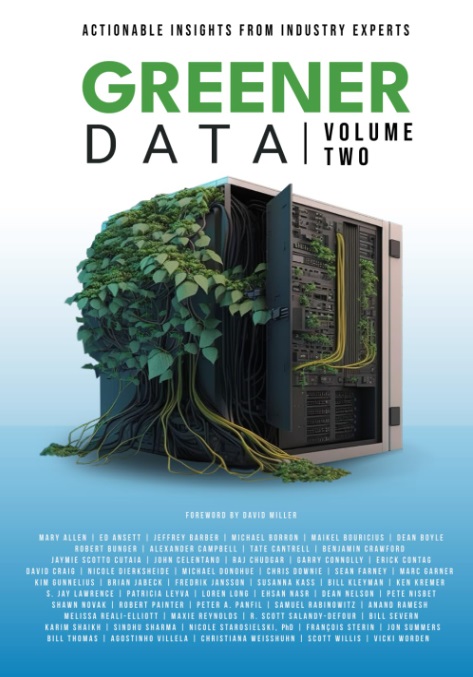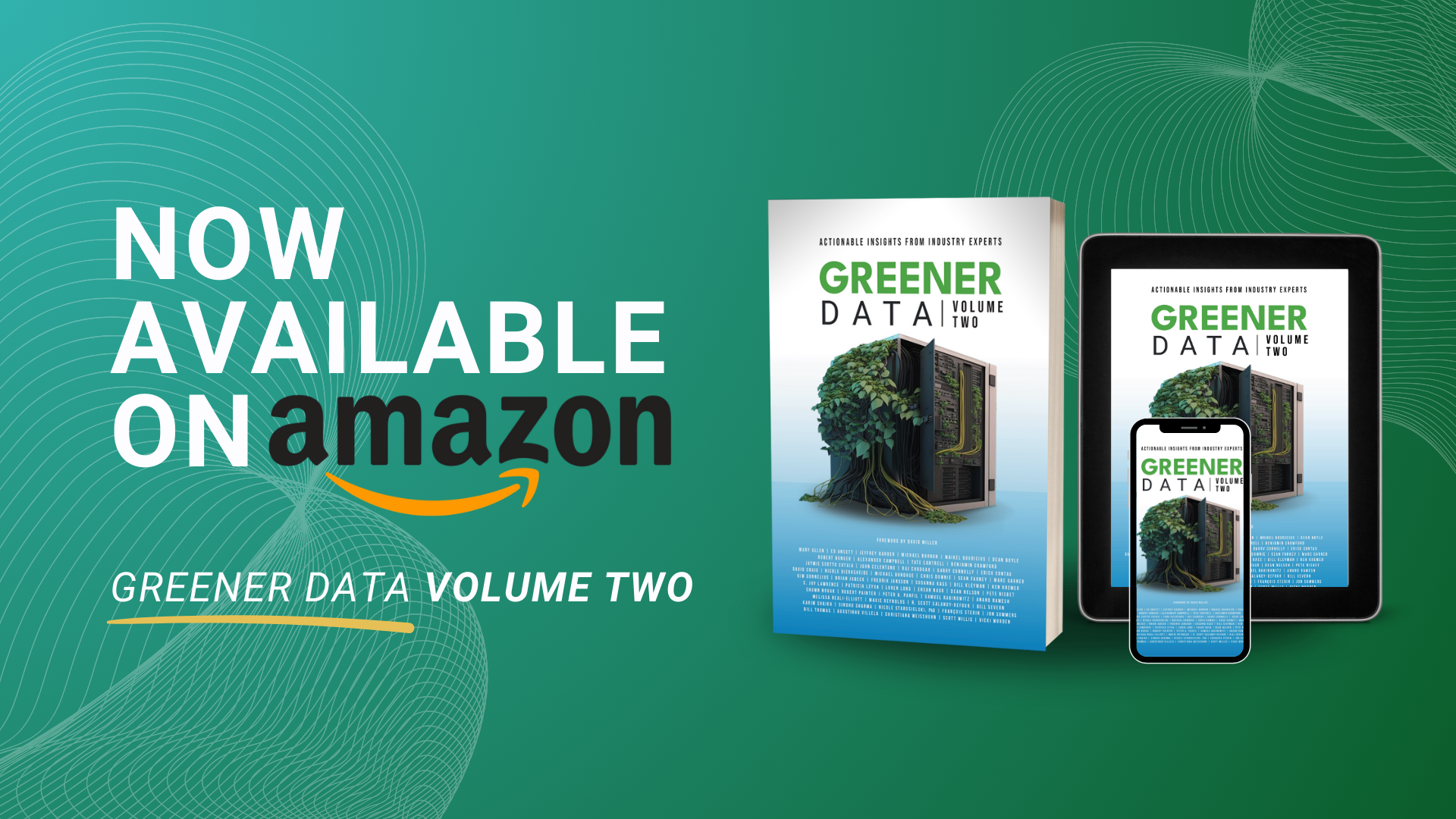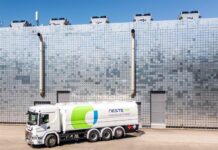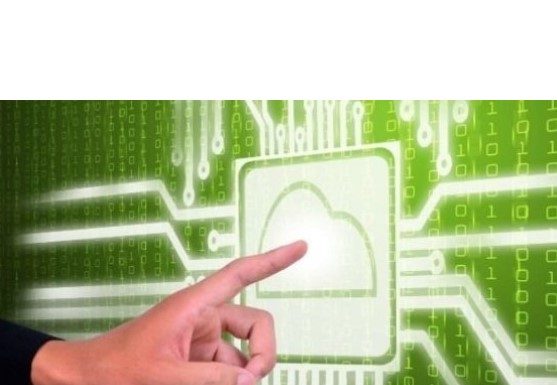 What better way to mark Earth Day than with the launch of Greener Data, Volume Two! A collaborative initiative a year in the making, this volume features input from over 50 data centre professionals from 14 countries who are experts in the industry, but also leaders in the design, development, funding and operation of sustainable digital infrastructure. It is this combination of skills and knowledge that have helped to make Greener Data, Volume Two. Actionable Insights From Industry Experts a super valuable resource for owner/operators of data centre networks and the ecosystem of developers, suppliers, customers, researchers and local community that builds around them. And it is the diversity of experience offered by 50 authors that will enable readers to find a relatable situation in one or several of the individual or collaborative ‘cornerstone’ chapters to leverage guidance therein as they forge their own unique pathway to greater sustainability.
What better way to mark Earth Day than with the launch of Greener Data, Volume Two! A collaborative initiative a year in the making, this volume features input from over 50 data centre professionals from 14 countries who are experts in the industry, but also leaders in the design, development, funding and operation of sustainable digital infrastructure. It is this combination of skills and knowledge that have helped to make Greener Data, Volume Two. Actionable Insights From Industry Experts a super valuable resource for owner/operators of data centre networks and the ecosystem of developers, suppliers, customers, researchers and local community that builds around them. And it is the diversity of experience offered by 50 authors that will enable readers to find a relatable situation in one or several of the individual or collaborative ‘cornerstone’ chapters to leverage guidance therein as they forge their own unique pathway to greater sustainability.
At close to 600 pages, Volume Two of the book is testament to the impact of Greener Data, v. 1 released a year ago today, and to the growing commitment of the data centre industry to do its part to address the climate emergency. The latest installment of the book has benefited from this commitment, from the keen insights offered by book contributors, and also from the editorial finesse of the JSA team who have managed the ‘volume’ and variety of authorial voice with considerable finesse. Many thanks to Jaymie Scotto Cutaia, Courtney Burrows and the whole team for their professional efforts, and to David Miller, managing director of the C40 Centre for Urban Climate Policy and Economy, and a leading thinker on sustainability in urban environments, who took time from promotion of his own book Solved (also launches today) to provide a generous Forward.
Volume Two of Greener Data has been organized differently than its predecessor, which presented chapters in the collection based on alphabetical order. With input from InsightaaS, the current volume has been organized around four themes: measurement and reporting, the use of low carbon fuel to cut carbon emissions, innovation in power and cooling, and building a new business case to support data centre sustainability. These themes are introduced in four sections of the book, by ‘cornerstone’ chapters developed by InsightaaS based on collaborative research practices that have animated much of our analysis and research output. The aim in these introductory chapters is to provide broad context, and to introduce key issues and opportunities that industry players may encounter in pursuit of better sustainable performance. These introductions are followed by several additional chapters that offer a deeper dive, or unique view of the topic covered in the book sections.
InsightaaS offers grateful thanks to the stellar lineup of industry experts who contributed to the creation of the first cornerstone chapter, entitled “Measure to Manage: Sustainability Metrics and Reporting in Data Center Networks,” including: Susanna Kass, co-founder of InfraPrime; Dean Nelson, founder and chairman of iMasons; Vicki Worden, CEO of the Green Building Initiative; Shawn Novak, then CSO of nZero; and Patricia Leyva, senior manager sustainability engagement at Equinix. Key takeaways from the chapter are:
- sustainability metrics no longer operate in isolation, rather they are part of broader climate science and policy initiatives designed to keep global temperature increases to 1.5 degrees C by 2050. Many data center operations have now developed UN sanctioned science-based sustainability targets and have declared Net Zero emissions plans (or better) that align with state level commitments and global goals. So data center action on sustainability is now part of a global movement designed to address the climate emergency.
- better environmental performance is being driven by new institutional pressures. A variety of stakeholders, including employees, customers, partners and investors, who each have their own commitments and targets and are calling for better performance, and for progress to be demonstrated through reliable reporting. Enhanced regulation in the EU, such as the CSRD, EU Code of Conduct for Data Centers, the recently published European Energy Efficiency Directive and the EN 50600 regulations is motivating reporting, but this is coming to the US as well, as enhanced disclosure requirements in financial reporting (by the SEC) for companies claiming environmental achievements, or US mandates for energy consumption reporting by crypto facilities show.
- though there are challenges to sustainability reporting – lack of standards, lack of staff resources and expertise, neglect of Scope 3 reporting, or double counting – things are improving. Many reporting mechanisms now roll up to global reporting frameworks, and new tools that automate processes to ease the burden of reporting and to improve accuracy are now available.
Intended initially as an investigation into the use of renewable energy in the data centre, the second chapter “Low Carbon Solutions: Pathways to Energy Maturity in the Data Center,” developed into a much broader discussion of the multiple pathways that are available to support a shift away from the use of carbon dense energy. This evolution of the topic is attributed to the deep industry experience with multiple solution approaches that informed contributions from Jeffrey Barber, VP global data center sales at Bloom Energy; Michael Donohue, managing director of Cumulus Data; Brian Jabeck, VP global data center sales, Enchanted Rock; Ehsan Nasr, lead scientist with the Datacenter Advanced Development Team at Microsoft; Anand Ramesh, SVP Advanced Technology at EdgeConneX; and Sindhu Sharma, head of ESG at Nxtra by Airtel. These contributors focused on:
- “green electrons” – the data centre industry is now the largest corporate purchaser (through PPAs) of renewable energy on a global basis. And if these purchases will not be enough to decarbonize the grid, they may provide an example leading other carbon intense sectors to greater use of solar, wind, and increasingly, carbon-free nuclear power.
- “green bits” – this may involve the use of digital solutions to support data center-grid interactivity, or solutions that enable energy matching to circumvent the potential for “greenwashing,” approaches that highlight the importance of the data center in the energy transition.
- “green molecules” – delivered via microgrids powered by low carbon fuels such as renewable natural gas or hydrogen powered fuel cells, green energy storage solutions are available today, allowing operations of all sizes to improve sustainability performance.
Introduced by the chapter “Green Fire: Innovation in Data Center Power and Cooling,” the third section of the book covers a lot of critical territory. Though a huge topic, the chapter captured key sustainability challenges and trends in power and cooling with contributions from: Jon Summers, research lead in data centres at the Research Institutes of Sweden; Maikel Bouricius, CMO at Asperitas; Maxie Reynolds, founder of Subsea Cloud; Bill Kleyman, CEO of Apolo; Tate Cantrell, CTO at Verne; Bill Severn, EVP at 1623 Farnam; Melissa Reali-Elliott, marketing manager for DC BLOX; and Benjamin Crawford, manager of business Development for Power Systems at Kohler Energy. Key insights from this learned group of data centre experts include:
- the data center industry has a rich heritage in power and cooling innovation, and many options are available today, ranging from tried and true practices such as hot aisle containment and the use of free air cooling, to the use of software-based management solutions and the deployment of advanced energy efficient IT and facilities equipment – and everything in between.
- In the context of climate emergency, disruptive innovation is critical. With power supply threatened by aging grid infrastructure, increasingly frequent climate events, burgeoning demand associated with digitization and new applications like AI and IoT, the sustainability imperative for data centers takes on new urgency.
- There is a dazzling array of innovation that is emerging today, such as AI capacity to optimize power and cooling systems, liquid cooling in its various forms, including “free ocean” cooling in undersea data centre pods, or even cryogenic environments. We may need these sooner than we expect to manage increasing server density, and the carbon impact of an industry in high growth mode.
The final ‘cornerstone’ subject was perhaps the most difficult to develop, but potentially one of the most important. To remain viable, industry players are going to have to think differently about risk and reward, about the sustainability of their operations, and about working within an ecosystem to address local community and broad social climate goals. Thought leaders on this topic who shared their expertise in the chapter titled “Reconstructing the Business Case for Data Center Sustainability” included: Peter Panfil, VP global power at Vertiv; François Sterin, COO at Data4; Michael Borron, broker and VP with the data centre advisory group at Cushman & Wakefield; Peter Nisbet, managing partner at Edenseven; and Dean Boyle, CEO at EkkoSense; and Janie Blouin-Grondin and Eric Bouchard, formerly of QScale. Key takeaways from this chapter include:
- we have cracked the code on the traditional financial case for sustainability in the data center. In Europe, for example, it is now actually cheaper to contract PPAs for renewable energy than it is to source power from traditional utilities; while in the rest of the world, the financial payback from energy conservation is clear – even in those jurisdictions like the US where there is no carbon tax.
- but to address climate issues – or the viability of individual operations and the industry itself – a new kind of business case that considers longer term risks and social requirements is needed. While the industry is on fire with huge demand increases, data centres that neglect the “triple ecos” – environment, economy, and ecosystem imperatives may not be sustainable.
- in building a “3P” (people, planet, profits) business case for sustainability, data centres will have to work to create the social license needed to allow them to grow and expand. Interested stakeholders include local municipalities, regulators, utilities, and even educational institutions, who increasingly require that data centres act as good corporate citizens that can contribute to community health and prosperity.
These chapter outlines offer only a glimpse of the riches offered by this multi-author volume. If you would like to take a closer look, the book is now available on Amazon in both Kindle eBook and paperback formats. And to celebrate Earth Day, it is offered at special discounted rates. Join the Greener Data movement!

To learn more from the horse’s mouth, chapter author interviews are presented here:
(25) COMING SOON – Greener Data Volume Two – Earth Day 2024 | LinkedIn








